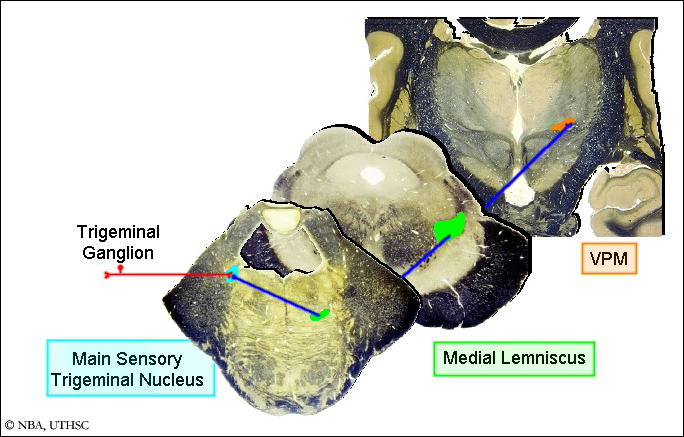Lab 3 (ƒ5) - Somatosensory, Viscerosensory and Spinocerebellar Pathways
Main Sensory Trigeminal Pathway
The main sensory trigeminal pathway, the cranial homologue of the medial lemniscal pathway, mediates discriminative touch and proprioception from the face. Somatosensory information from the face and dura travels via four cranial nerves: the trigeminal (V) nerve, facial (VII) nerve, glossopharyngeal (IX) nerve and the vagus (X) nerve. Recall that some afferent fibers in the facial, glossopharyngeal and vagus nerves carry somatosensory information from the ear (pinna, external auditory meatus, tympanic membrane, and middle ear cavity) and posterior dura.

The central processes of the 1° afferent neurons carrying information processed for discriminative touch and proprioception from the face and dura terminate on 2° afferents in the main sensory trigeminal nucleus. Most of the 2° afferent axons from the main sensory trigeminal nucleus decussate and join the contralateral
ventral trigeminothalamic tract (also called the
ventral trigeminal lemniscus). The ventral trigeminothalamic tract runs in very close association with the medial lemniscus. The 2° afferent fibers ascend in the ventral trigeminothalamic tract to the thalamus where they terminate on 3° afferents in the ventral posteromedial nucleus (VPM) of the thalamus. The axons of these 3° afferents, ascend in the posterior limb of the internal capsule and terminate in the
postcentral gyrus of the parietal lobe.

